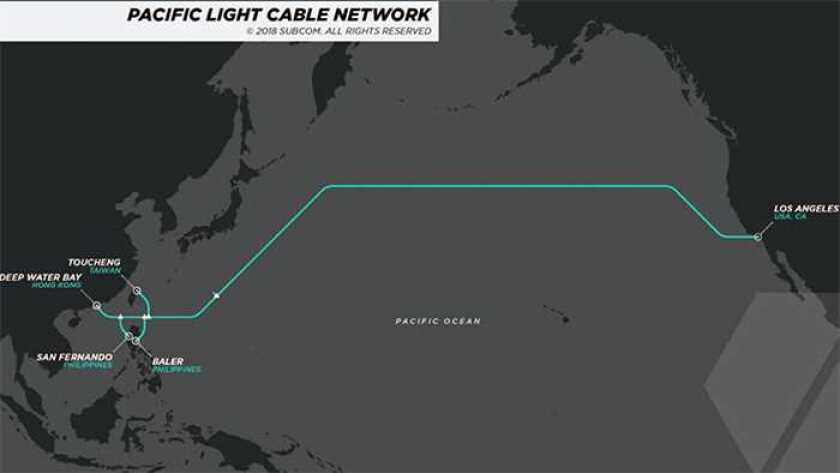Team Telecom – the telecoms security group set up in Washington in April by an executive order from President Donald Trump – is recommending that the last leg of the Pacific Light Cable Network (PLCN) not be allowed to go into operation.
This leg runs from Deep Water Bay in Hong Kong to Taiwan and the Philippines before continuing to the US.
The ruling confirms a warning given to Capacity in late April that US authorities were starting to regard Hong Kong as risky – in US terms – as China, something that has only increased since the Chinese government has stepped up its security operations in Hong Kong.
That report concerned the threat by the Federal Communications Commission (FCC) to withdraw US operating licences from China Telecom, China Unicom and two subsidiaries of CITIC Telecom International Holdings.
Capacity was told that if the FCC carried out its April threat – as it is in the process of doing – that will not only stop Chinese operators running networks in US territory but also ban Chinese shared ownership of subsea cables that land in the US.
The move could indirectly later threaten the global status of a number of Hong Kong-based carriers, which have extensive international networks connecting Africa, Europe, the Americas and the rest of Asia from their hubs in the Hong Kong special administrative region.
Google and Facebook, part-owners of the PLCN cable, had clearly already sensed the mood in Washington. They asked the FCC in February for permission to activate the parts of PLCN between the US and the Philippines and Taiwan, leaving the sections connecting to Hong Kong dark.
Now Team Telecom has blocked any chance that the westernmost stretch of the cable ever be lit. It has recommended that the Taiwan-Philippines-US stretches be approved, as those sections have no Chinese ownership and are controlled by Google and Facebook.
In April, said Team Telecom this week, the FCC gave PLCN a temporary licence to operate between Taiwan and the US for six months, “based on obligations set forth in a Provisional National Security Agreement between Google and the US Departments of Justice, Homeland Security, and Defense”.
PLCN was designed to be the highest capacity subsea cable between the US and Asia, and the first direct connection between the US and Hong Kong.
Team Telecom said this week: “This raised national security concerns” because a subsidiary of Chinese telecoms operator Dr Peng Group, Pacific Light Data, is a “significant investor” in the cable.
According to PLCN’s own website, the cable stretches 12,971km from end to end. It has a capacity of 144Tbps, at 24Tbps per fibre pair. It was ready for service in late 2019. Round-trip delay between Los Angeles and Hong Kong – should signals ever get that far – is designed to be 130ms.
The US end of the cable is at Equinix’s LA4 carrier-neutral terminal in Los Angeles.
Team Telecom, which has existed in the shadows for decades until formally set up by Trump in April, says it was concerned about the Chinese “government’s goal that Hong Kong be the dominant hub in the Asia Pacific region for global information and communications technology and services infrastructure, which would increase the share of US internet, data, and telecommunications traffic to the Asia Pacific region traversing PRC [People’s Republic of China] territory and PRC-owned or -controlled infrastructure before reaching its ultimate destinations in other parts of Asia.”






